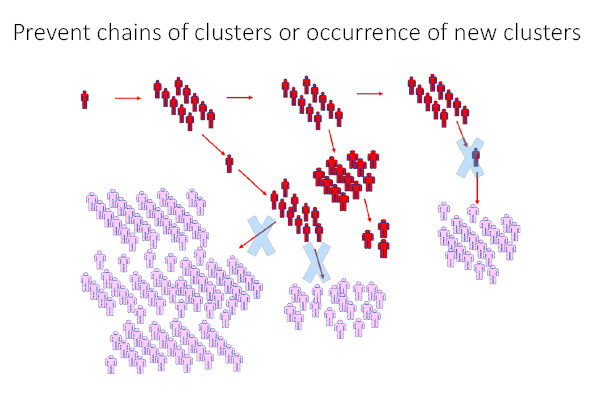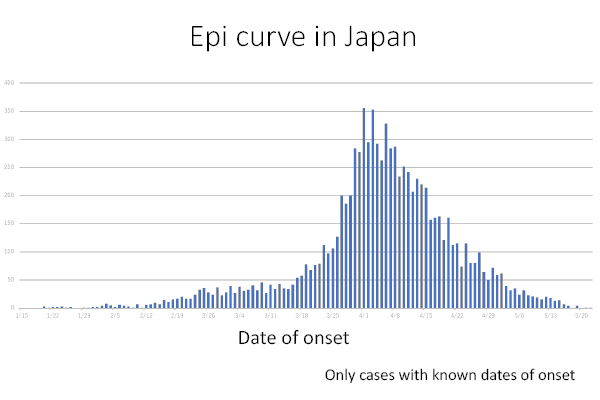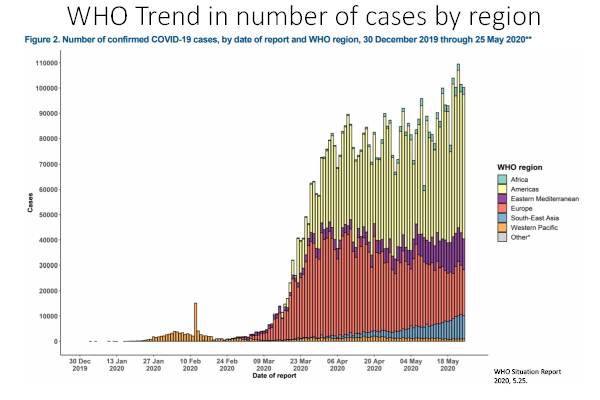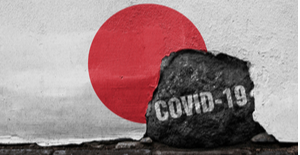Hitoshi Oshitani, Japan's leading virology expert and a professor at the Tohoku University Graduate School of Medicine, gave an online seminar on COVID-19 to faculty and staff on May 26.
In the lecture, he spoke of the current status of the pandemic and what lies ahead. He also explained the effectiveness of preventive measures taken by Japan and touched on the role that research institutions like Tohoku University can play going forward.
Oshitani has been at the forefront of the fight against the coronavirus as a member of the Japanese government's panel of experts. The following is a short summary of his lecture, which has been translated from Japanese, and edited for clarity.
What is COVID-19?
COVID-19 is caused by a virus called SARS-CoV2. While it is a virus that is akin to SARS, there are differences.
SARS, which infected some 8,000 people in 2002-03, was easy to detect. The virus infected the lower respiratory tract, such as the lungs, and most patients developed severe symptoms. Chains of transmissions were easily detected and cut off, which led to a successful containment after just nine months.
COVID-19 has three likely patterns: one where the virus multiplies in the lungs, one where it multiplies in the lungs and throat, and mild cases where the virus only multiplies in the throat. There are many asymptomatic cases, as well as patients with only mild symptoms. It's a "stealth virus" which is difficult to contain because the cases are difficult to track.
Japan's Strategy: Cluster-based Approach
The Japanese government set up the Cluster Response Taskforce on February 25 and focused on early identification of clusters. It defined a cluster as a collection of five cases or more, that can be infected by one infected individual. Japan was the only major country to implement this measure.
Most other countries identify close contacts when an infected individual is identified, And PCR testing is conducted for these close contacts. This "prospective contact tracing" method was successful with SARS and Ebola, but has not been as effective with COVID-19 because of the many asymptomatic and mild cases.
Japan's strategy has been to use "prospective contact tracing" in tandem with "retrospective contact tracing" to find the source of infections. The aim is to identify infected individuals around a cluster and ask those who had been in contact with them to stay home. This would prevent new clusters from forming around them and stop the chain of transmissions.

Through this method, the taskforce has also been able to study the characteristics of clusters, and effectively promote behavioral changes to prevent more clusters from occurring.
Behaviour Change: The 3Cs
Based on the common characteristics across clusters, risky environments were identified as closed spaces, crowded spaces and close-contact settings (3Cs). People have been strongly urged to avoid these 3Cs.
Other high risk places include where people breathe heavily (such as gyms), speak loudly or sing; as well as restaurants and bars where one person entertains many customers in close proximity.
The main goal of Japan's response measures has been to suppress the transmission, reduce the number of severe cases and minimize the number of deaths. This need to "flatten the curve" was especially urgent in April/ early May when there was concern that the number of cases might exceed the public health resources and capacity for intensive care. Potential devastation was averted because the government declared a state of emergency.

Post-COVID-19
The threat of future infectious diseases, such as pandemic influenza, is inevitable. What experts have learnt from COVID-19 is that what was previously thought of as adequate responses is mostly not enough. And because everyone is highly mobile these days, it would only take a few weeks for a pandemic influenza to spread across a country or even the entire world.
Post-COVID-19 society cannot be like pre-COVID-19 society. It needs to be better, safer and more resilient.
The previously adopted western-centric framework and guidelines around western norms have proven to be ineffective. Japan has navigated the COVID-19 thus far by promoting public awareness and "requesting" that its people avoid certain risky environments, rather than forcing restrictive measures such as those taken in other countries.

No one knows if, or when, COVID-19 will be eliminated, so continued vigilance is important. Vaccines will take at least a year and a half to be developed, and then even more time is needed for the world to be vaccinated. Polio is an example of how it can take decades to eradicate a disease even with effective vaccines.
Tohoku University:
Tohoku University has faculty, staff and students in many fields already working on COVID-19 research, and engaging in international collaboration.
One area that the university could also look into, is how and why Japan has managed to navigate COVID-19 with significantly fewer loss of life so far, compared to other countries, especially in Europe and North America.
It is possible that this is due to a complicated combination of factors, including differences in healthcare systems, effective use of mathematical modeling, economic impact, lifestyle, acceptance of behavior change and religion. Genetics and culture could also play a part, so it might be interesting for the university to work with Asian partners to find out.
After the Great East Japan Earthquake, Japan reflected on itself, its society and lifestyle and made adjustments to recover stronger and more resilient. This pandemic is an opportunity to do the same.
Link:
Contact:
Tohoku University International PR SectionTel: +81-22-217-4816
Fax: +81-22-217-4818
Email: public_relations
 grp.tohoku.ac.jp
grp.tohoku.ac.jp


